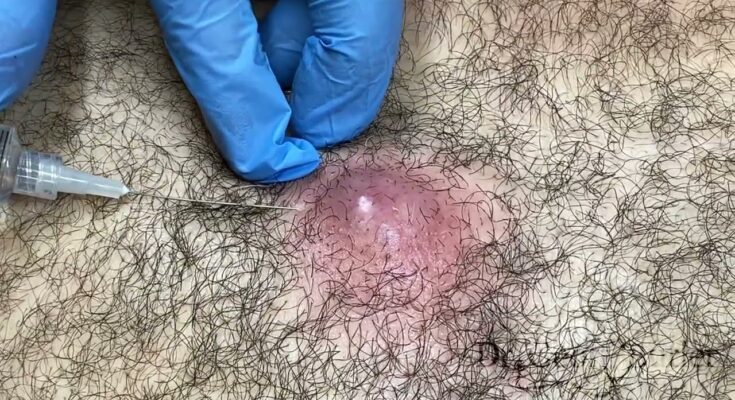Removing an infected cyst from the chest typically involves a combination of drainage and excision, depending on the severity of the infection. If the cyst is infected (like an abscess), the procedure will likely involve draining the infection first to relieve pressure and then, if needed, removing the cyst itself to prevent future infections.
Here’s an overview of the process:
1. Anesthesia
Local anesthesia will be administered to numb the area around the cyst, but if the infection is severe or the cyst is large, the procedure may be done under general anesthesia, particularly if the surgeon feels the need for more extensive work.
2. Drainage (if the cyst is abscessed)
If the cyst is infected and has formed an abscess (a pocket of pus), the first step is often to drain the infection. The surgeon will make a small incision at the most prominent point of the cyst, and the pus will be drained out. The surgeon may also gently irrigate the area to clear out any remaining infected material.
3. Cyst Removal (if needed)
After draining the infection, the surgeon will assess the cyst itself. If it’s a simple epidermal cyst, they may remove the cyst wall to prevent the infection from recurring. If the cyst is large or complicated, they might remove it entirely. This step can be done at the time of drainage or during a follow-up procedure, depending on the situation.
4. Cleaning and Closing
Once the cyst and infection are dealt with, the surgeon will clean the wound and may place a small drain in the incision to prevent further fluid buildup. In some cases, the wound might be left open to heal from the inside out, especially if infection was a concern.
If sutures are necessary, they may be placed, but this often depends on the wound’s size and condition. The surgeon will guide you on whether stitches will be needed or if it will be left to heal naturally.
5. Aftercare
After the procedure, proper care is critical to ensure the wound heals well and there is no recurrence of the infection. You’ll likely be instructed to:
- Keep the area clean and dry.
- Use antibiotics (either topical or oral) to prevent infection.
- Follow up with the surgeon to check for any signs of infection or recurrence.
- Avoid tight clothing or pressure on the chest area while it heals.
Recovery
The recovery time can vary, but most people can expect a few days to a week of mild discomfort. If a drain is used, it will usually be removed after a few days. If stitches are used, they will need to be removed within a week or so.
Risks and Considerations
- There’s always a risk of recurrence, especially if the cyst’s wall wasn’t completely removed.
- Infection is possible, particularly if the cyst was infected initially or if the wound isn’t properly cared for after the procedure.
- Scarring is possible, especially for larger cysts.
Have you been advised to have this procedure done, or are you exploring it as a potential option?



